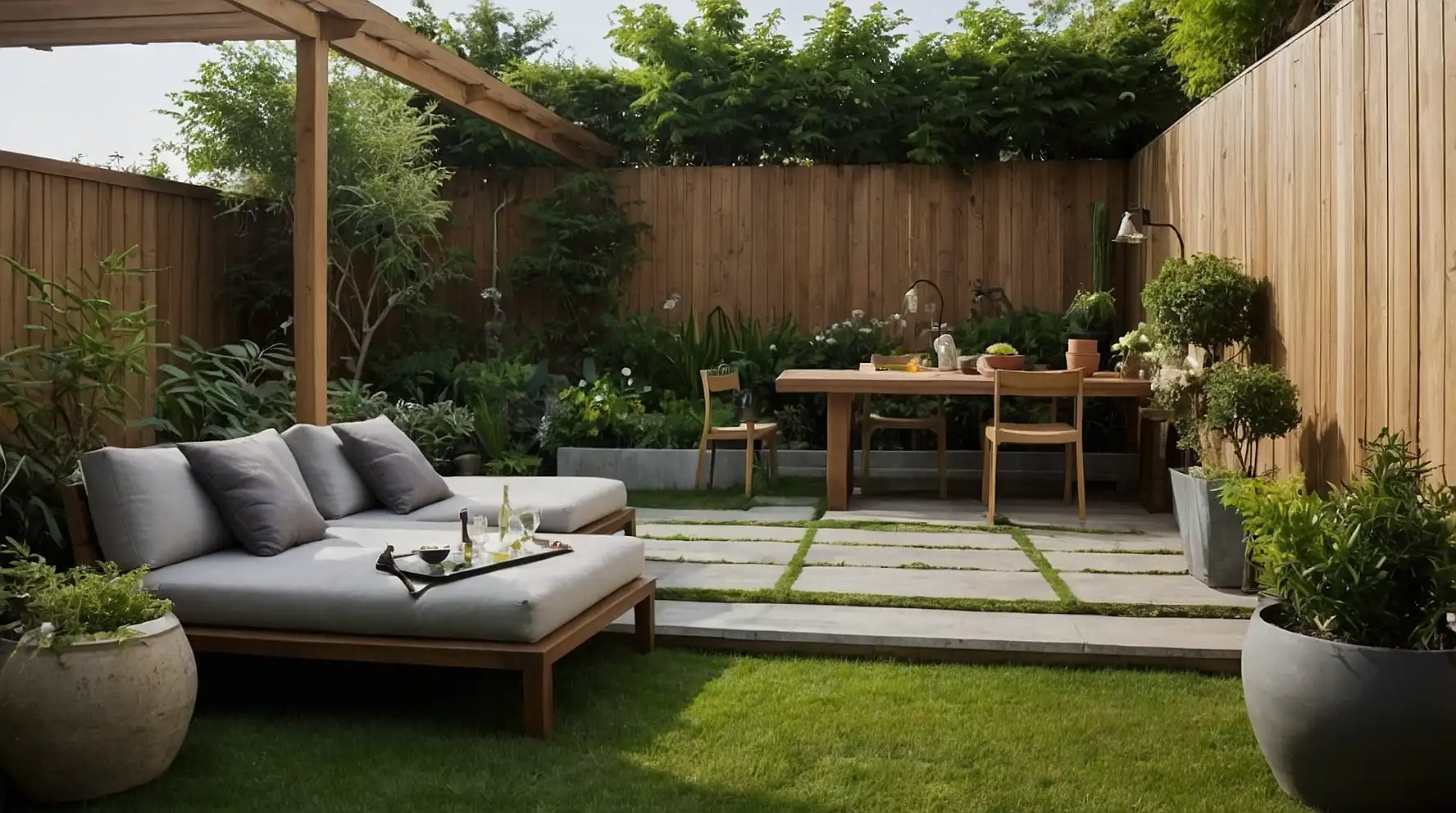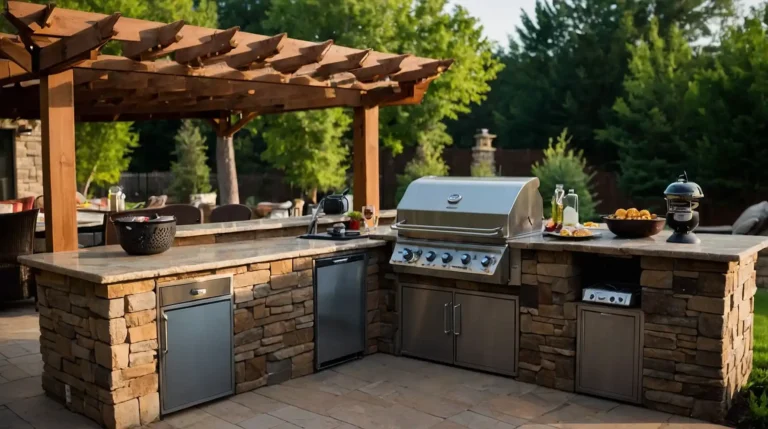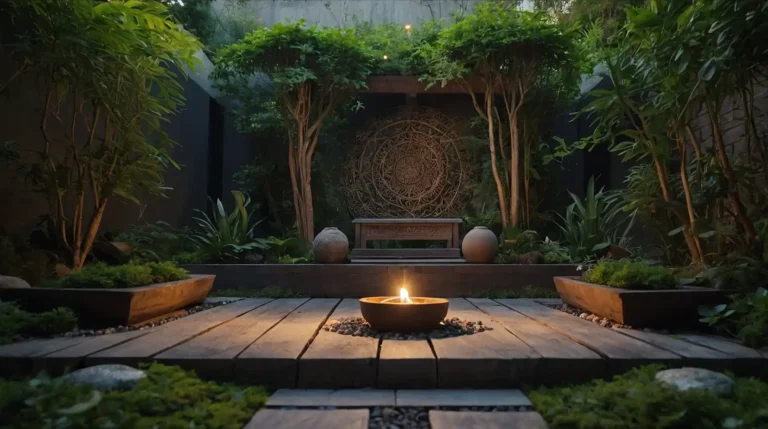27 Innovative Small Garden Ideas: Maximize Your Tiny Outdoor Space
Limited outdoor space doesn’t mean limiting your gardening dreams.
Small gardens, patios, balconies, and even windowsills can transform into lush, productive, and beautiful green spaces with the right approach.
The key to small garden success lies in thinking creatively about every available inch.
Vertical space, multipurpose elements, and careful plant selection can maximize your tiny garden’s potential.
Ready to make the most of your compact outdoor area?
These innovative small garden ideas will help you create a space that feels both larger and more functional while reflecting your personal style.
1: Vertical Garden Wall
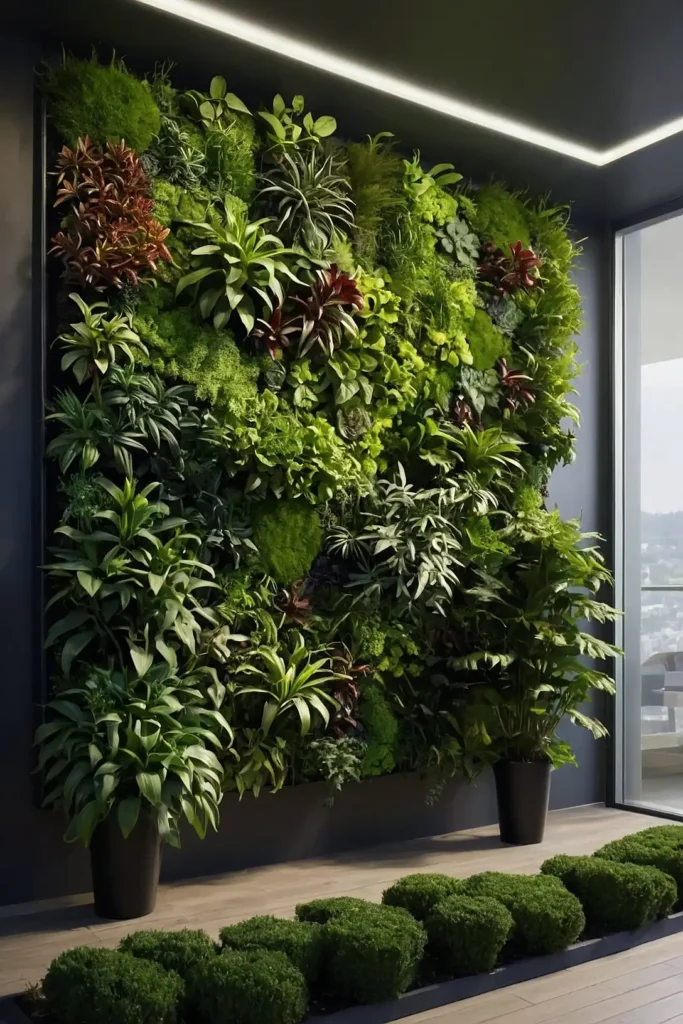
Transform a blank wall or fence into a lush growing space by installing a vertical garden system.
Use pocket planters, pallets, or specialized vertical gardening panels to grow upward instead of outward.
You’ll maximize your growing space while creating a stunning living wall effect.
This approach works particularly well for herbs, succulents, and trailing plants that don’t need deep root systems.
2: Tiered Planters
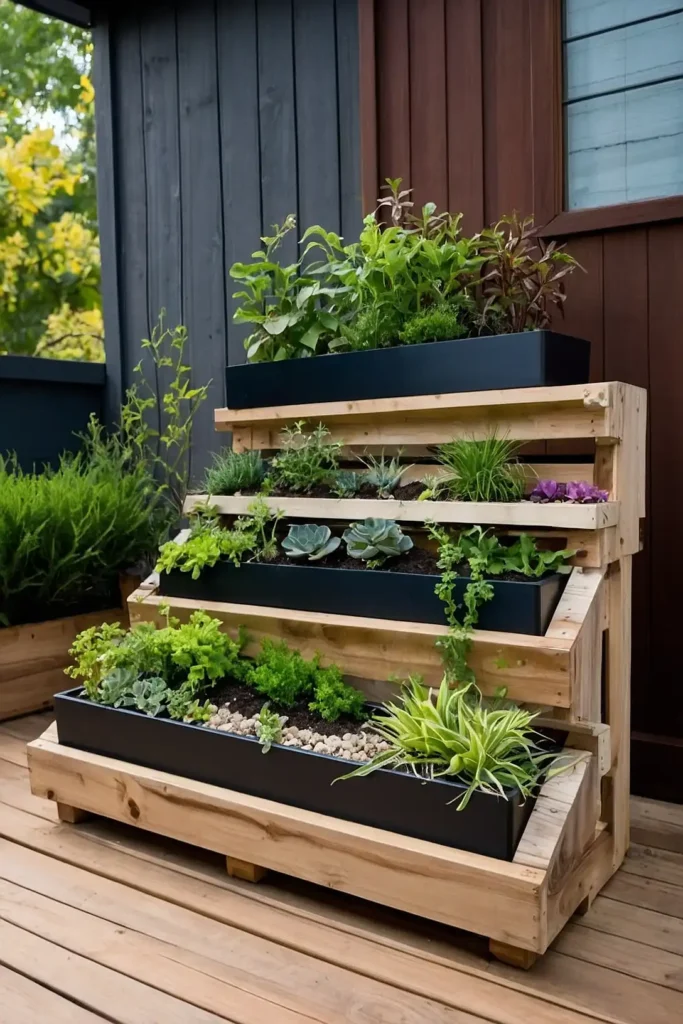
Stack multiple planting containers at different heights to create a layered garden that makes the most of limited horizontal space.
Use stairs, plant stands, or purpose-built tiered planters.
You’ll appreciate how this arrangement creates visual interest while accommodating more plants than a single-level approach.
Place taller plants at the back and cascading varieties at the front for maximum impact.
3: Container Garden Clusters
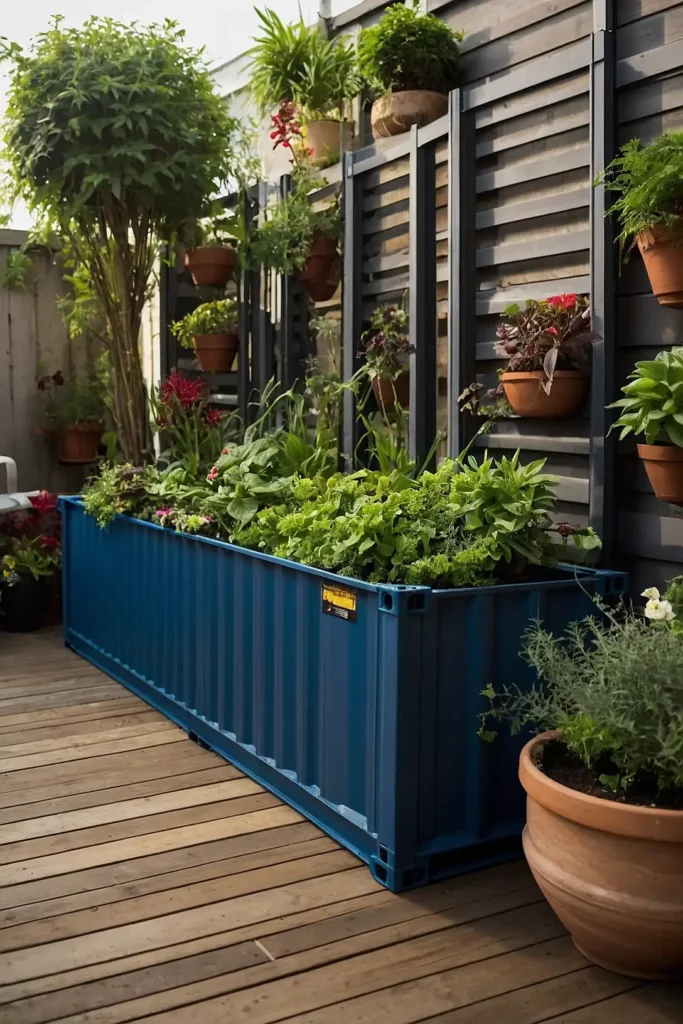
Group containers of various sizes, heights, and materials to create a cohesive, garden-like feel even without actual garden beds.
Mix large statement pots with smaller accent containers for visual rhythm.
You’ll find this approach offers maximum flexibility to rearrange as needed or move plants based on light requirements.
Use lightweight containers with casters on the bottom for easier seasonal repositioning.
4: Hanging Basket Garden
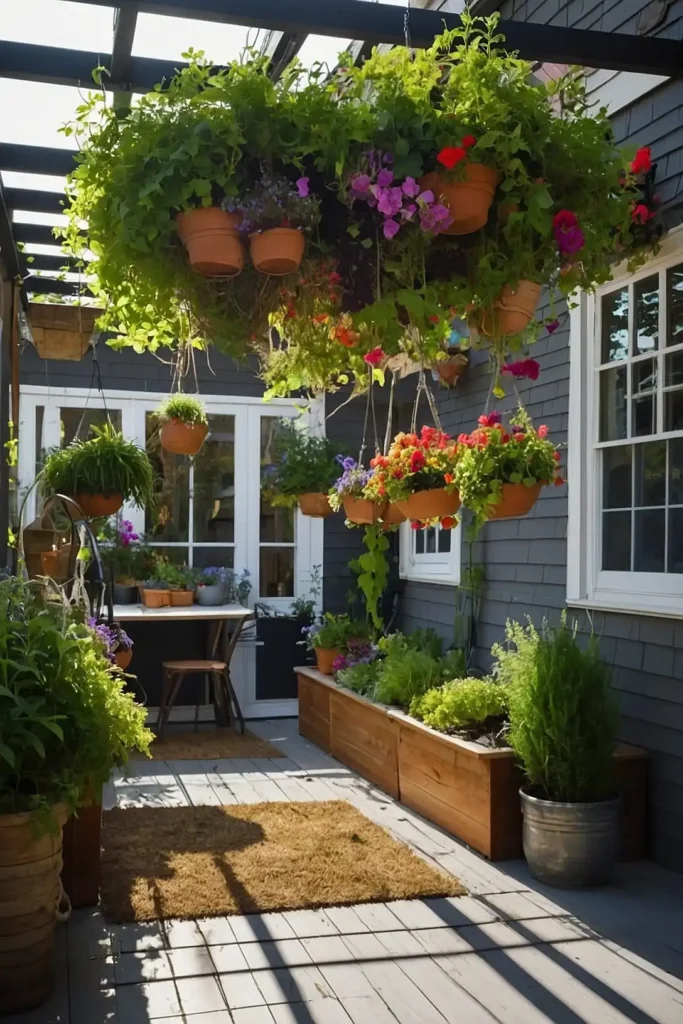
Utilize overhead space by installing multiple hanging baskets from pergolas, eaves, shepherd’s hooks, or ceiling hooks.
Layer multiple heights for a lush, immersive effect.
You’ll love how this approach draws the eye upward, making your small space feel larger and more three-dimensional.
Choose trailing varieties like fuchsias, petunias, or strawberries for beautiful cascading effects.
5: Espaliered Fruit Trees
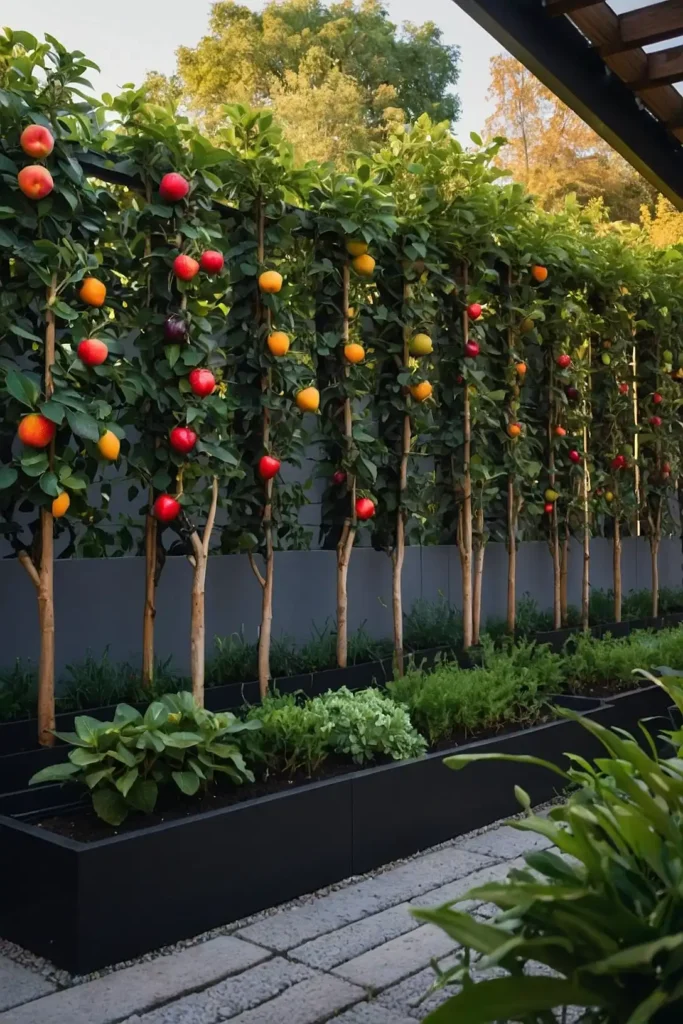
Train fruit trees to grow flat against a wall or fence using the espalier technique.
This ancient method allows you to grow apples, pears, or other fruit trees in a fraction of the normal space.
You’ll enjoy the benefits of homegrown fruit without sacrificing precious square footage.
The formal, architectural appearance adds structure and visual interest to small gardens year-round.
6: Living Privacy Screen
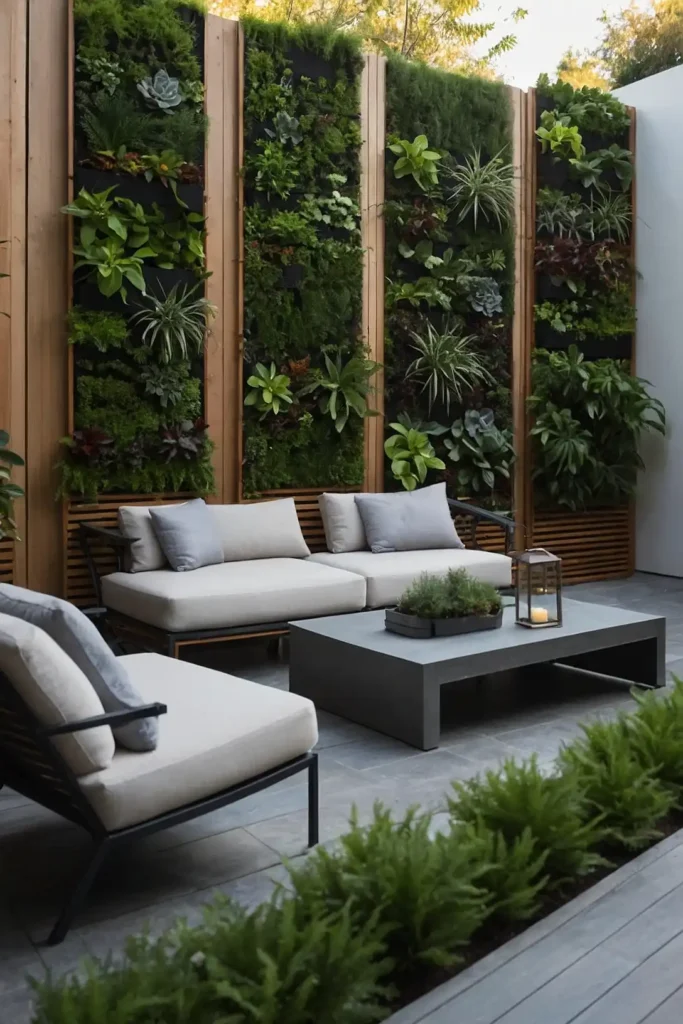
Create a narrow planting bed and grow tall, columnar plants to form a living privacy screen that takes up minimal floor space.
Use ornamental grasses, columnar trees, or narrow evergreen shrubs.
You’ll gain privacy without building a fence while bringing nature closer to your seating area.
This approach adds vertical interest and can help block unsightly views or create separate garden “rooms.”
7: Windowsill Herb Garden
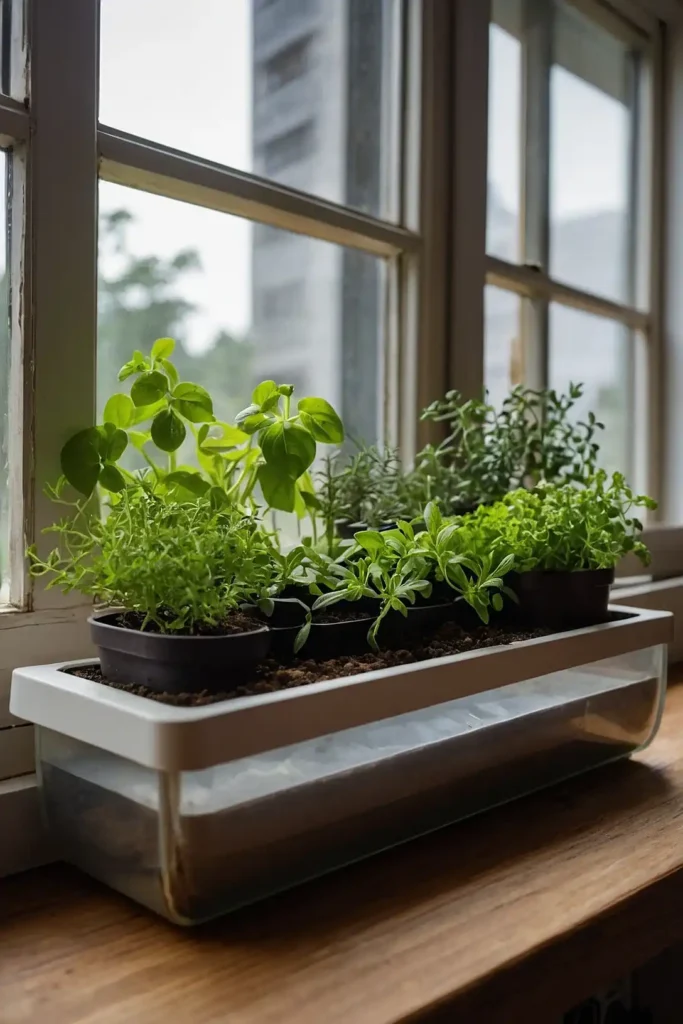
Transform your kitchen windowsill into a productive herb garden using small containers and frequently-used culinary herbs.
Choose compact varieties specifically bred for container growing.
You’ll enjoy the convenience of snipping fresh herbs while cooking without dedicating outdoor space to them.
The herbs receive excellent light from the window while adding living beauty to your kitchen.
8: Balcony Railing Planters
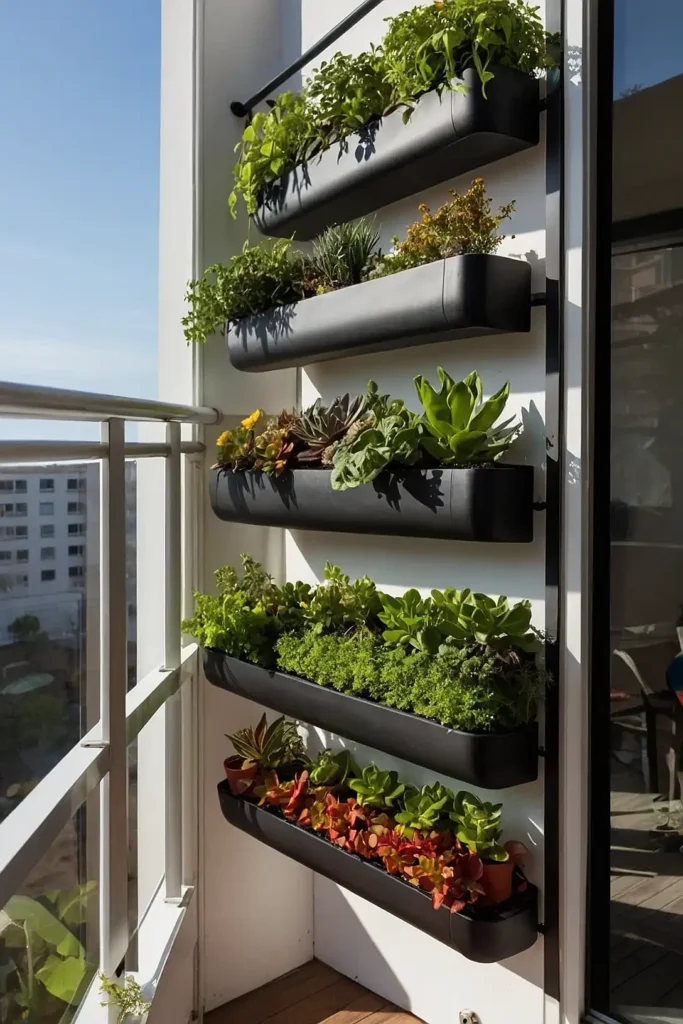
Maximize unused railing space by installing planters designed to hang from balcony or deck railings.
These specialized containers sit on the outside of railings, freeing up your floor area.
You’ll appreciate how this approach keeps your walking and seating areas clear while surrounding you with plants.
Choose trailing varieties that will cascade downward for the most dramatic effect.
9: Raised Bed Seating
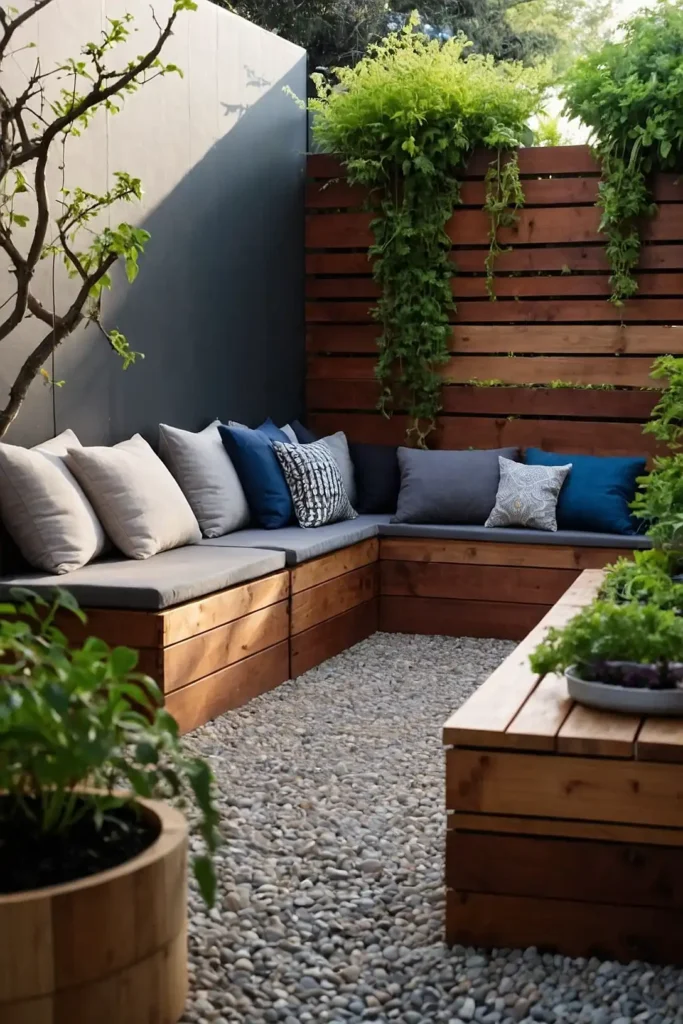
Build raised garden beds with wide edges that double as casual seating areas. This multipurpose approach saves space by combining two essential garden elements.
You’ll maximize functionality while creating a more immersive garden experience where visitors sit right among the plants.
Use rot-resistant wood or masonry and add cushions for comfort when using as seating.
10: Garden Mirror Illusion
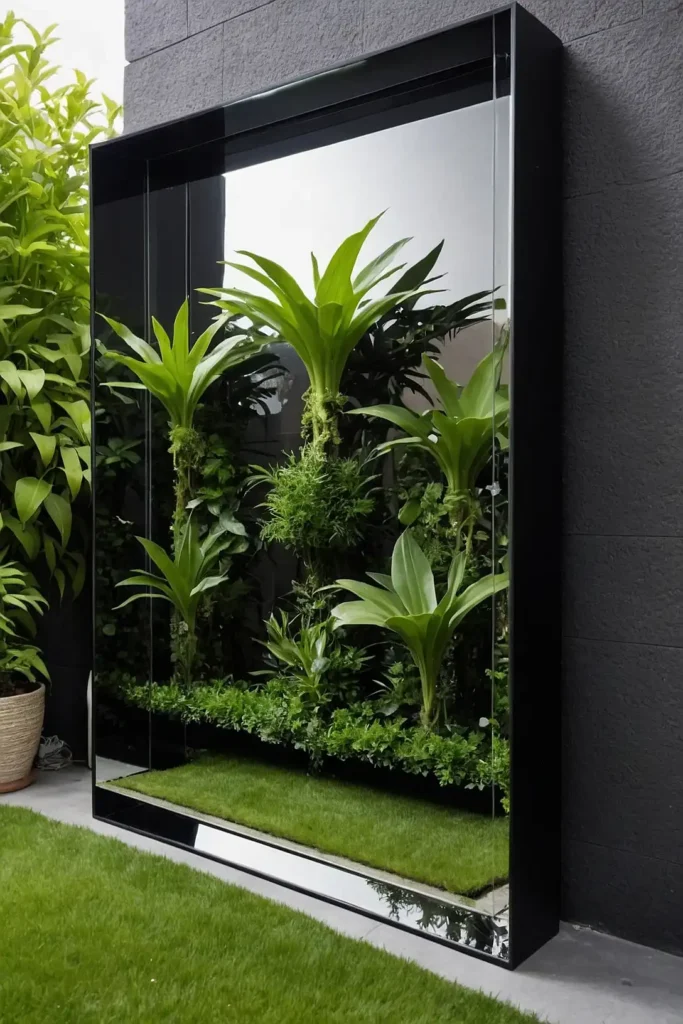
Install weather-resistant mirrors on walls or fences to create the illusion of a larger garden.
Position them strategically to reflect your favorite plants or garden features.
You’ll be amazed how this simple addition visually doubles your garden space. For safety, choose specially designed garden mirrors or secure regular mirrors properly to withstand outdoor conditions.
11: Movable Garden Elements
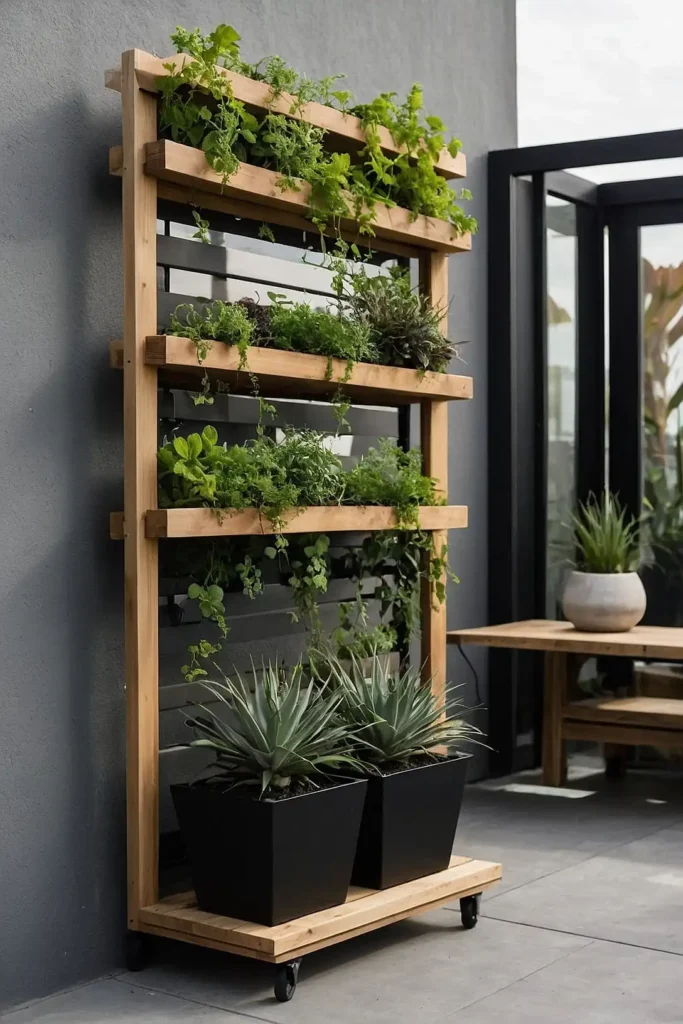
Design your small garden with mobility in mind by using containers on casters, modular furniture, and lightweight planters that can be reconfigured for different activities or seasons.
You’ll appreciate the flexibility to transform your space from an intimate dinner setting to a lounging area.
This approach ensures your garden serves multiple functions despite its limited square footage.
12: Folding or Wall-Mounted Furniture
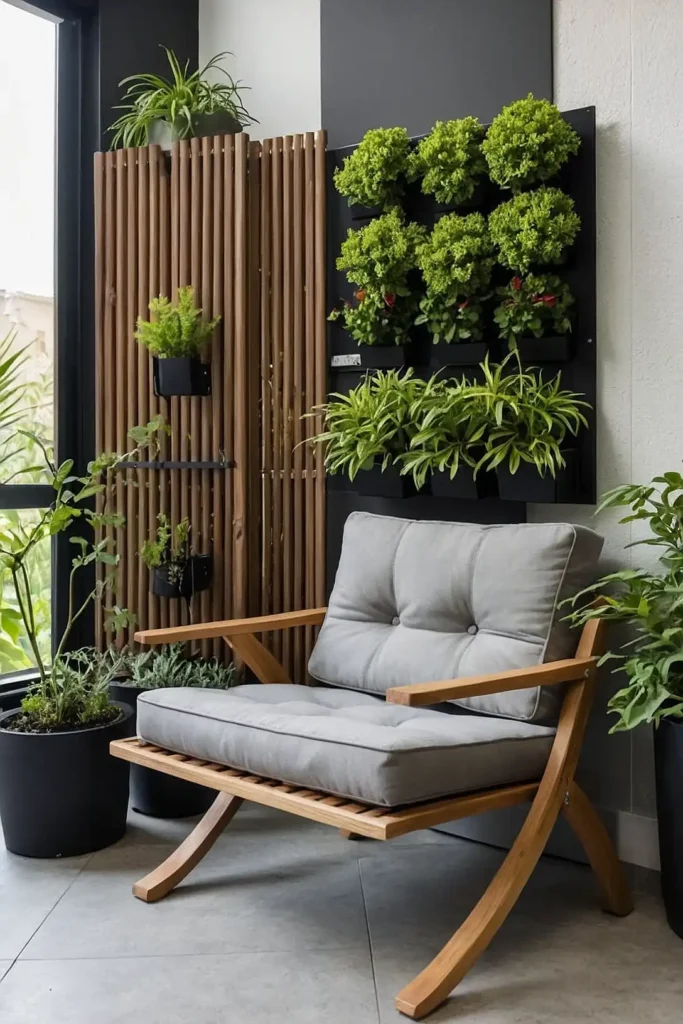
Save precious floor space with furniture that folds away when not in use or mounts directly to walls.
Consider drop-leaf tables, folding chairs, or wall-mounted benches.
You’ll maximize your usable garden area while still having proper seating when entertaining.
When not needed, simply fold everything away to create a more open, spacious feeling.
13: Miniature Water Feature
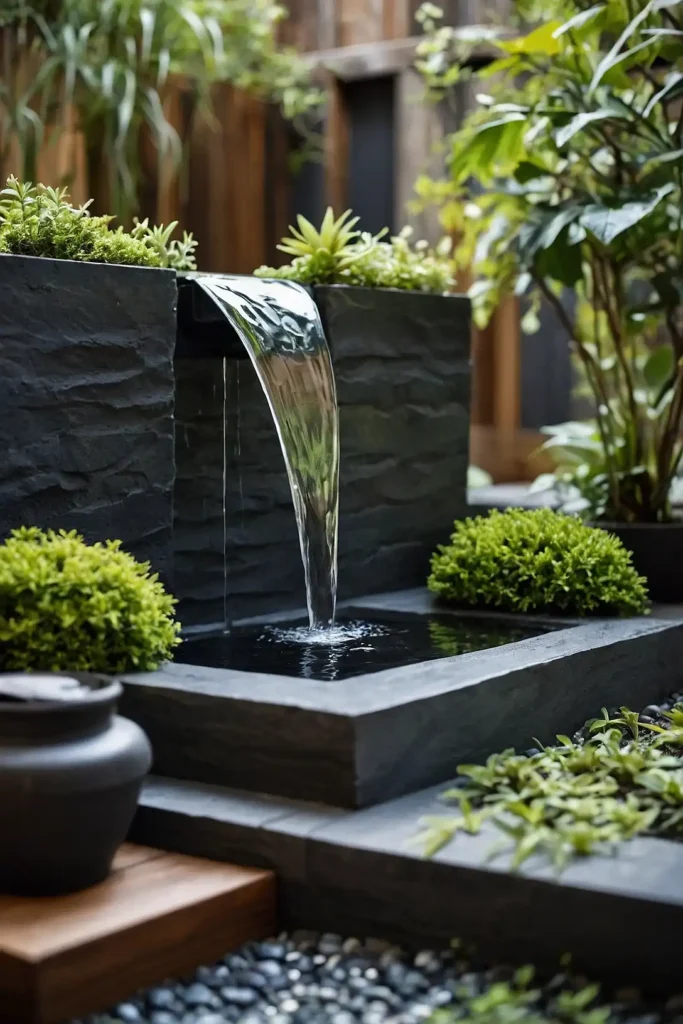
Add a space-efficient water feature like a small wall fountain, tabletop bubbler, or container pond to introduce the calming sound and reflective qualities of water without significant space commitment.
You’ll enjoy the sensory benefits of water in the garden—sound, movement, and wildlife attraction—scaled appropriately for your small space.
Even the smallest water features attract beneficial insects and birds.
14: Grid Garden System
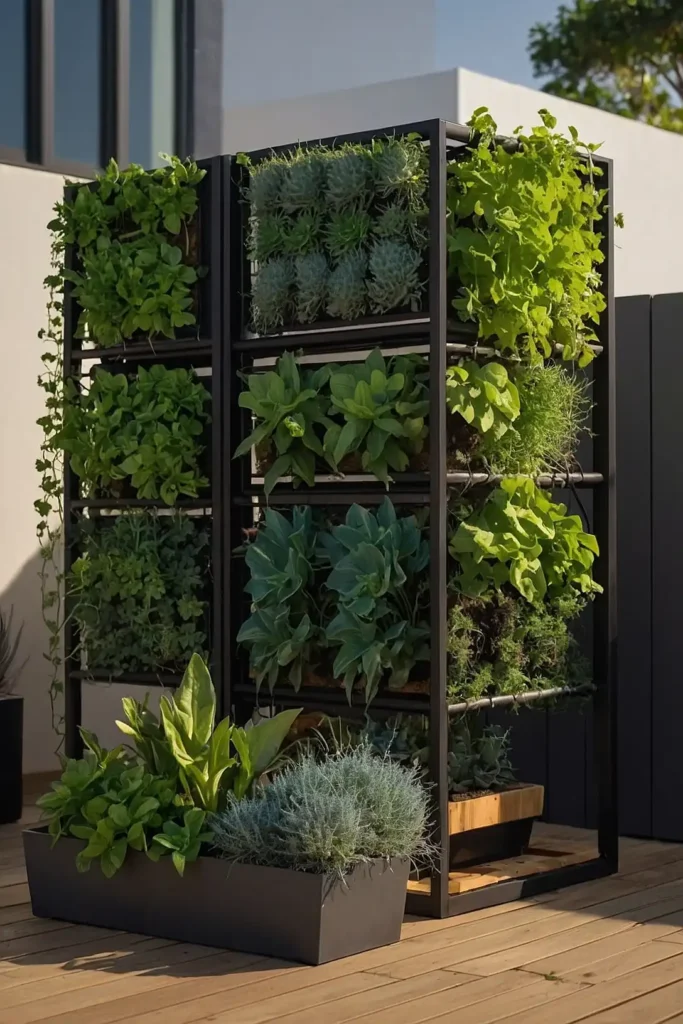
Maximize growing efficiency by implementing a square-foot gardening approach with a grid system that organizes plants into small, intensively planted sections rather than traditional rows.
You’ll grow significantly more in limited space by carefully planning each square for optimal plant density.
This systematic approach eliminates wasted space while making maintenance and harvesting more organized.
15: Dwarf Variety Plants
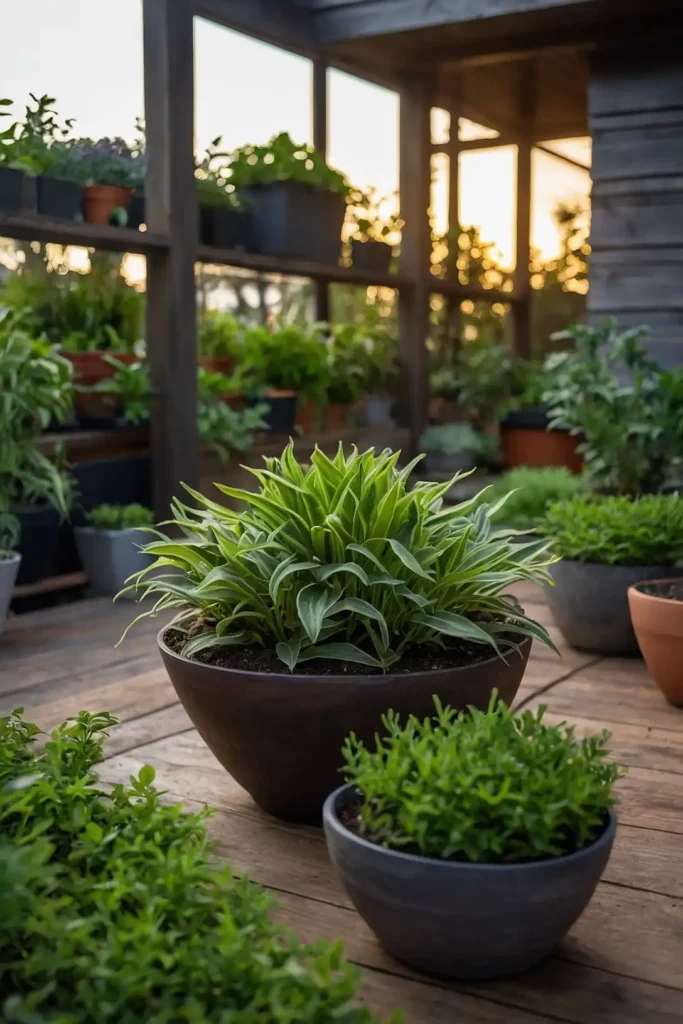
Select specially bred dwarf or compact varieties of your favorite plants, including vegetables, shrubs, and trees that deliver full-size results in half the space.
You’ll enjoy the same flowers, foliage, or harvest without surrendering valuable square footage.
Modern plant breeding has created compact options for everything from tomatoes to Japanese maples.
16: Living Roof Garden
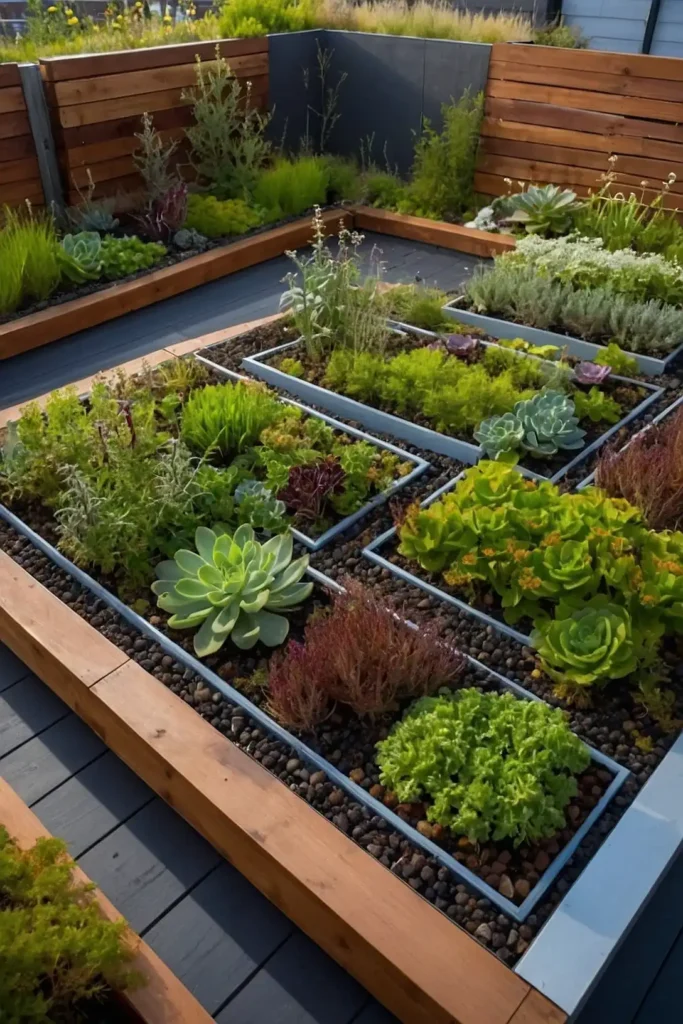
Transform a shed, garage, or extension roof into a growing space by installing a green roof system planted with sedums, herbs, or other appropriate low-maintenance plants.
You’ll reclaim otherwise unused space while adding insulation, absorbing rainwater, and creating wildlife habitat.
Though requiring proper structural support, this approach literally adds a new dimension to small gardens.
17: Sunken Conversation Pit
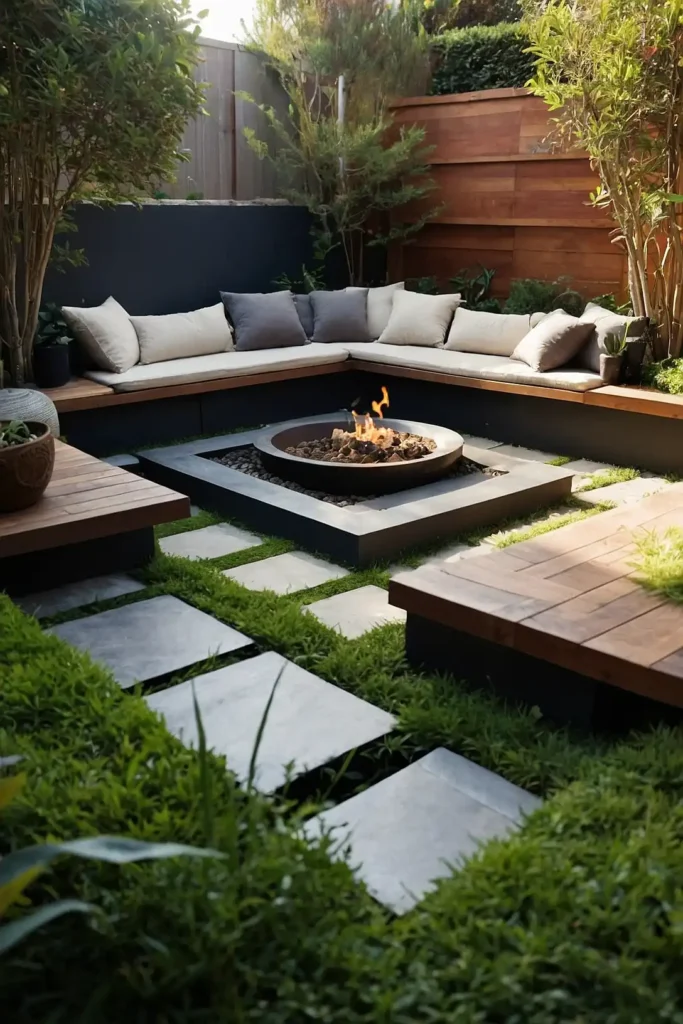
Create a slightly lowered seating area surrounded by raised planters to immerse yourself in the garden without sacrificing precious space.
Even lowering by 12-18 inches creates dramatic effect.
You’ll appreciate how this design makes your garden feel larger through varied elevations.
The surrounding raised beds place plants at eye level when seated, creating a more intimate plant experience.
18: Wall-Mounted Tool Storage
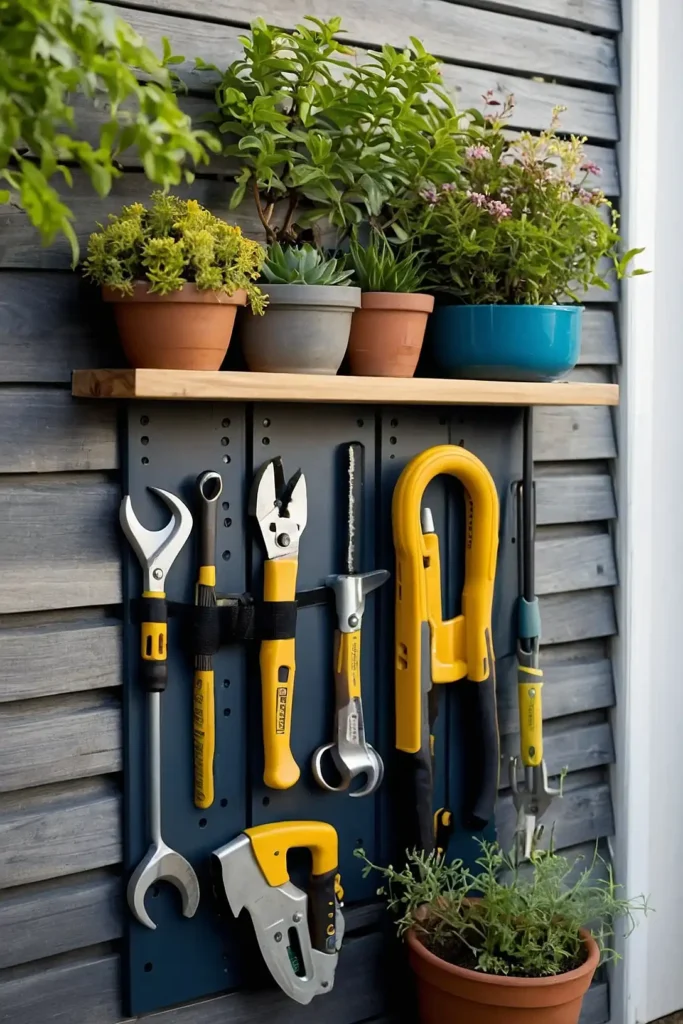
Install a dedicated wall panel with hooks, clips, and shelves to organize garden tools vertically rather than taking up valuable floor or shed space with traditional storage.
You’ll find this approach keeps tools accessible while protecting your limited ground space.
Choose an attractive organization system that adds visual interest rather than appearing cluttered.
19: Multipurpose Garden Elements
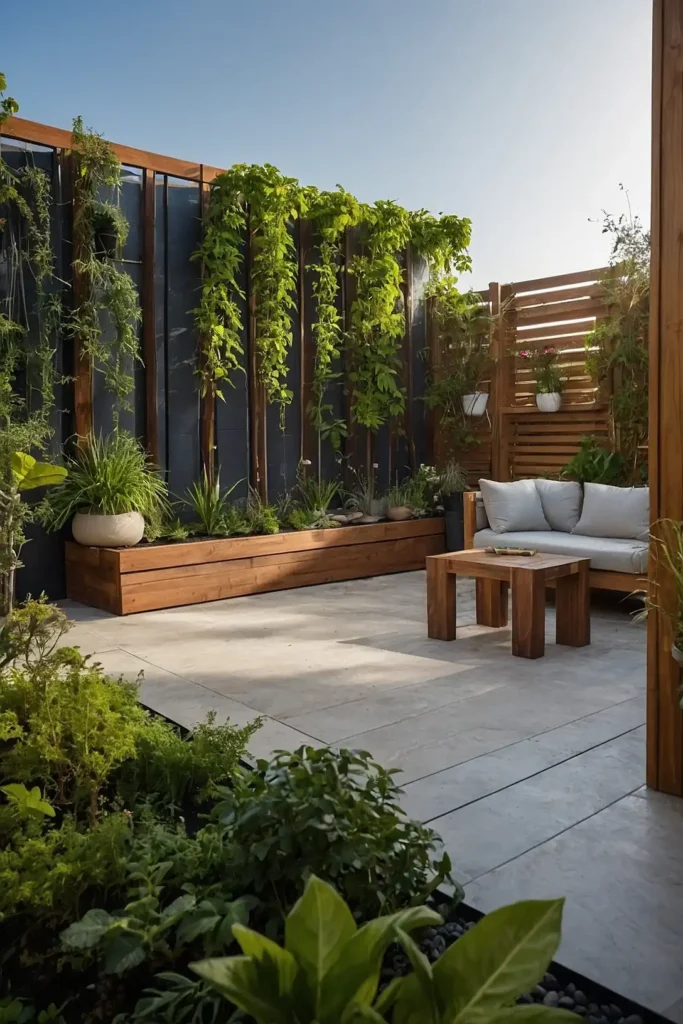
Select items that serve multiple functions, such as a bench with storage underneath, a table with built-in planters, or a decorative obelisk that supports climbing plants.
You’ll maximize every element’s utility while maintaining a clean, uncluttered appearance.
This approach ensures your small garden works harder without feeling overloaded with separate single-purpose items.
20: Flowering Edibles Garden
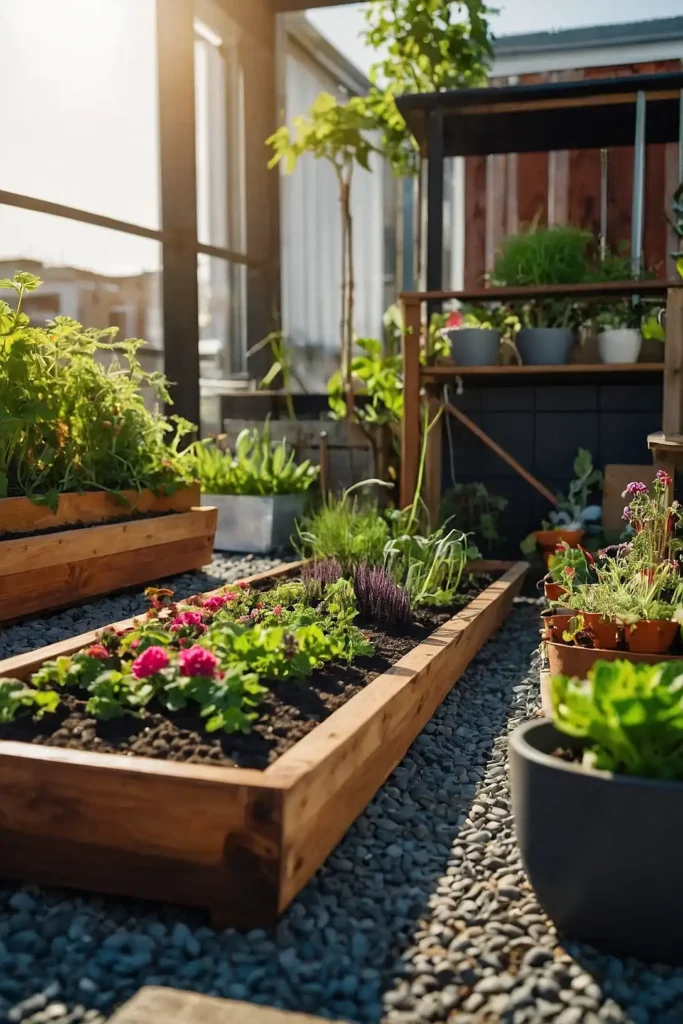
Integrate beautiful edible plants into ornamental displays rather than segregating vegetables into a traditional plot.
Many vegetables and herbs offer attractive flowers and foliage.
You’ll create an aesthetically pleasing garden that produces food without dedicating separate space to purely ornamental plants.
Rainbow chard, flowering herbs, and compact berry bushes work particularly well.
21: Potting Table Irrigation System
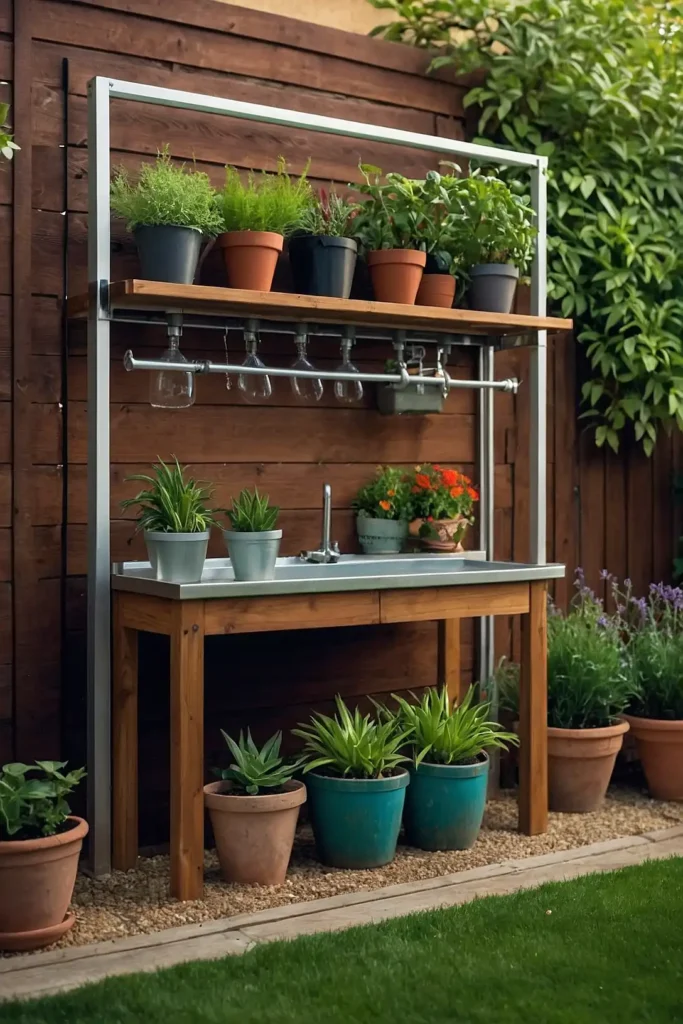
Install a small potting station with built-in irrigation to simplify container gardening maintenance.
Include a tiny sink connected to a hose and a system for capturing and reusing water.
You’ll appreciate this efficiency center that minimizes water waste and simplifies plant care.
Even a 2×4 foot table can transform container gardening in a small space when thoughtfully designed.
22: Succulent Tapestry
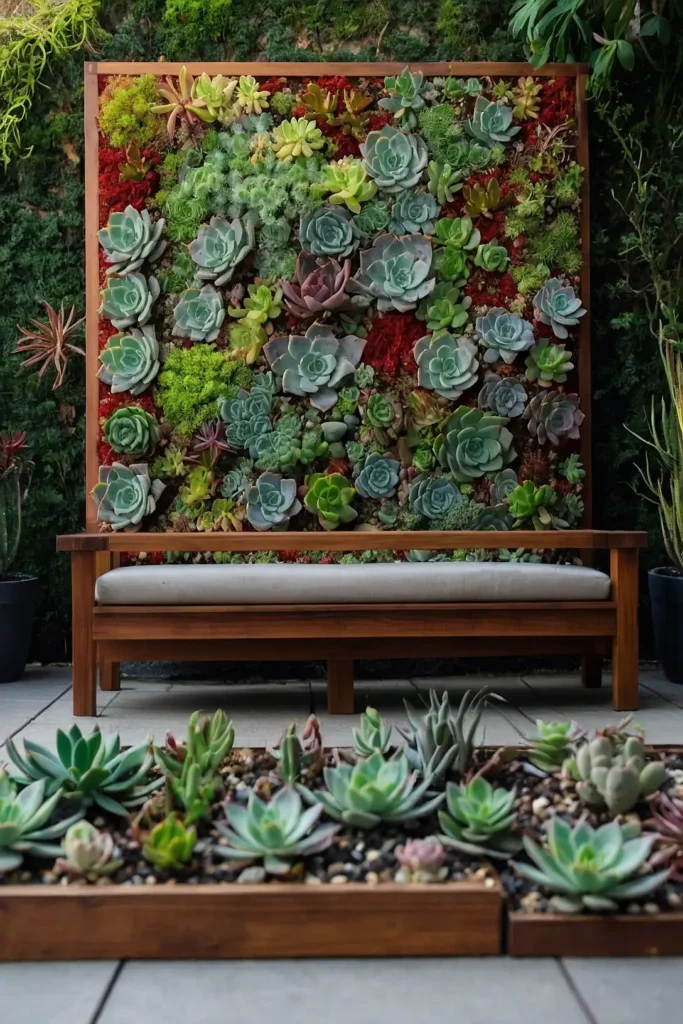
Create a living mosaic of low-maintenance succulents in a shallow container, vertical panel, or small ground-level bed.
These water-wise plants thrive in minimal soil with neglect.
You’ll enjoy the intricate patterns and textures that change throughout the year with minimal care requirements.
This approach delivers maximum visual impact in minimal space with very little water.
23: Fairy Garden Dimension
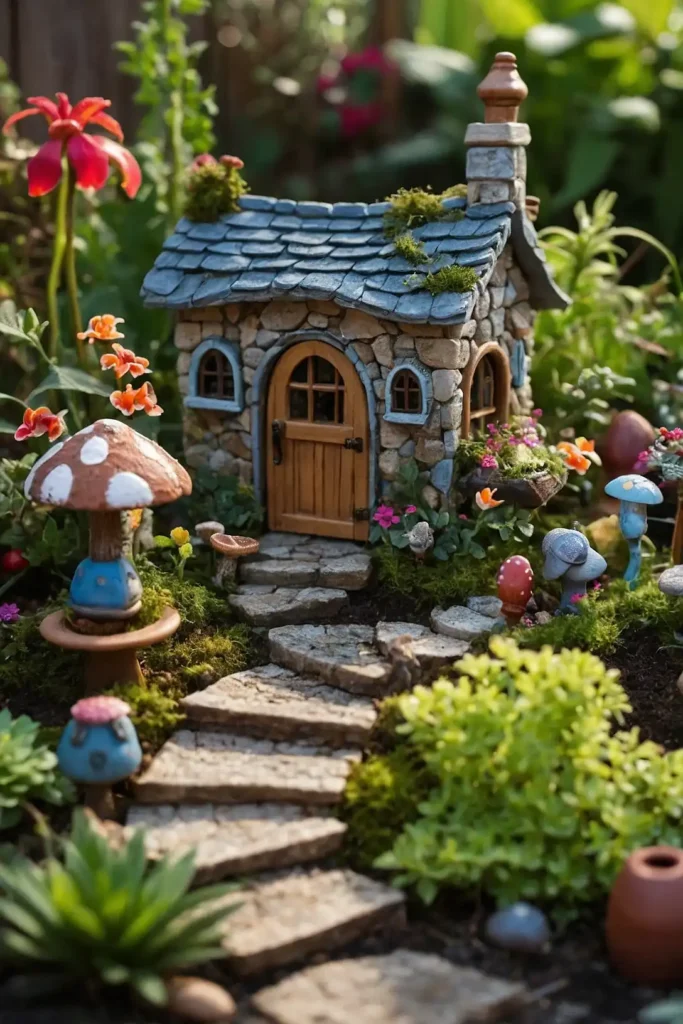
Develop a miniature garden-within-a-garden using scaled-down plants and tiny accessory elements.
This creates the illusion of a larger landscape through careful composition and perspective.
You’ll be surprised how this whimsical approach adds a sense of expanded space through the power of scale.
The tiny features draw viewers in for closer inspection, creating an immersive experience.
24: Convertible Garden Space
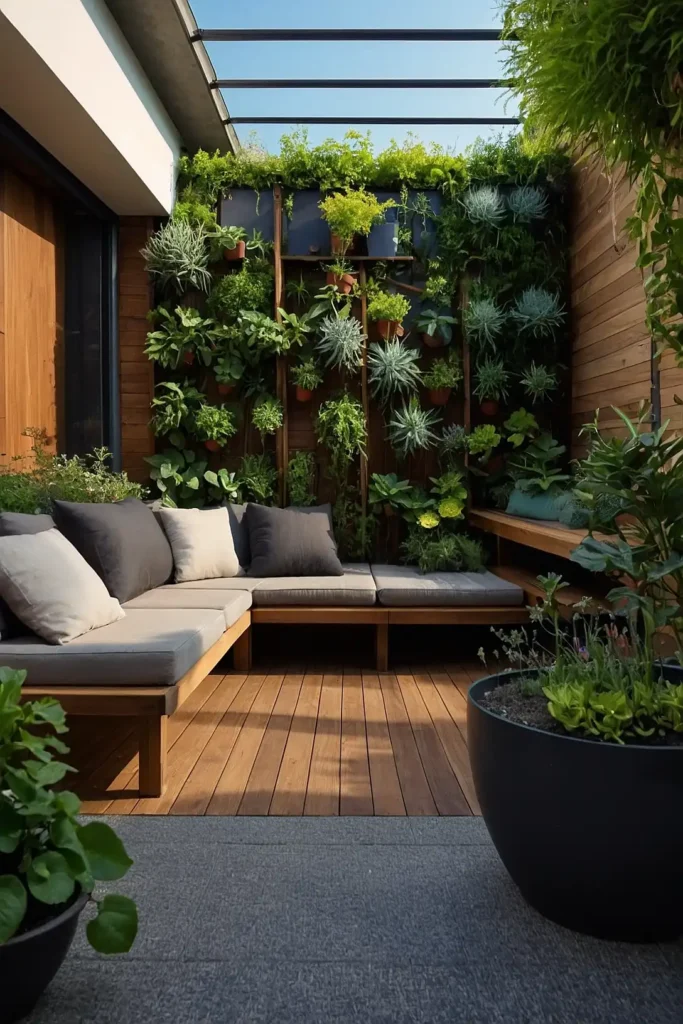
Design a small patio or balcony with removable deck tiles over soil-filled planter boxes.
This allows you to adjust the balance between paved and planted areas as needed.
You’ll appreciate the flexibility to expand your entertaining space when hosting guests or increase your growing area during peak gardening season.
This adaptability makes your limited space serve multiple purposes.
25: Small-Space Composting
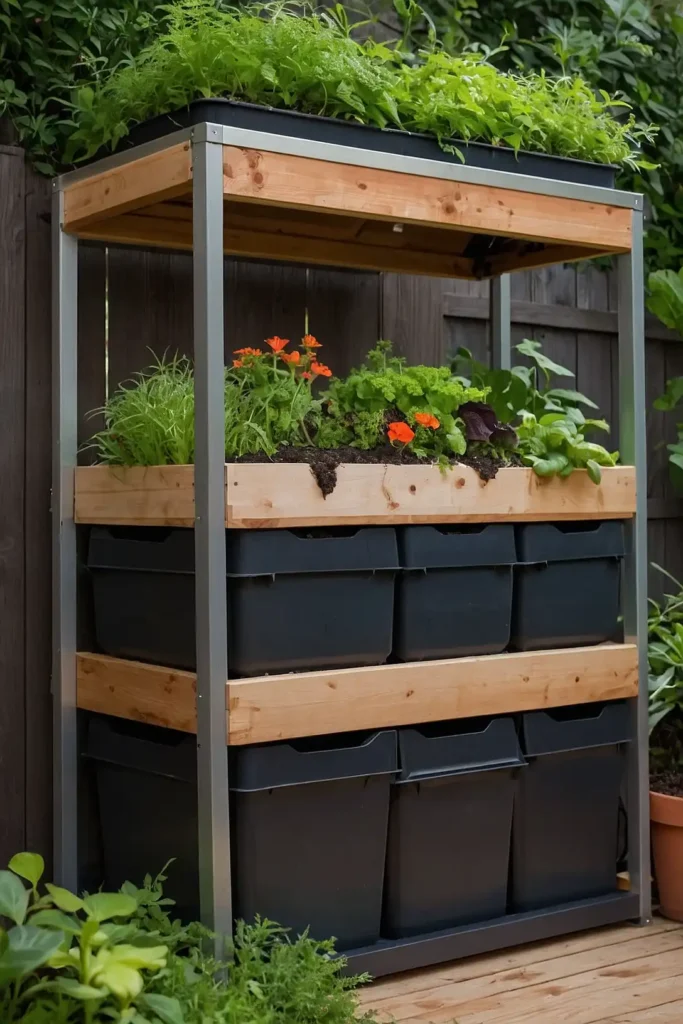
Incorporate compact composting solutions like a small tumbling composter, bokashi system, or worm bin that process kitchen scraps without requiring traditional compost heap space.
You’ll complete the garden lifecycle even in tiny spaces while producing valuable compost for your plants.
These systems often feature better odor control than traditional composting, making them neighbor-friendly.
26: Corner Maximization

Transform awkward corner spaces with specially designed corner planters, diagonal trellises, or curved benches that fit perfectly into otherwise wasted angular areas.
You’ll reclaim space that often goes unused in small gardens while adding architectural interest.
Corners offer unique design opportunities that can become distinctive features rather than afterthoughts.
27: Japanese-Inspired Minimalism
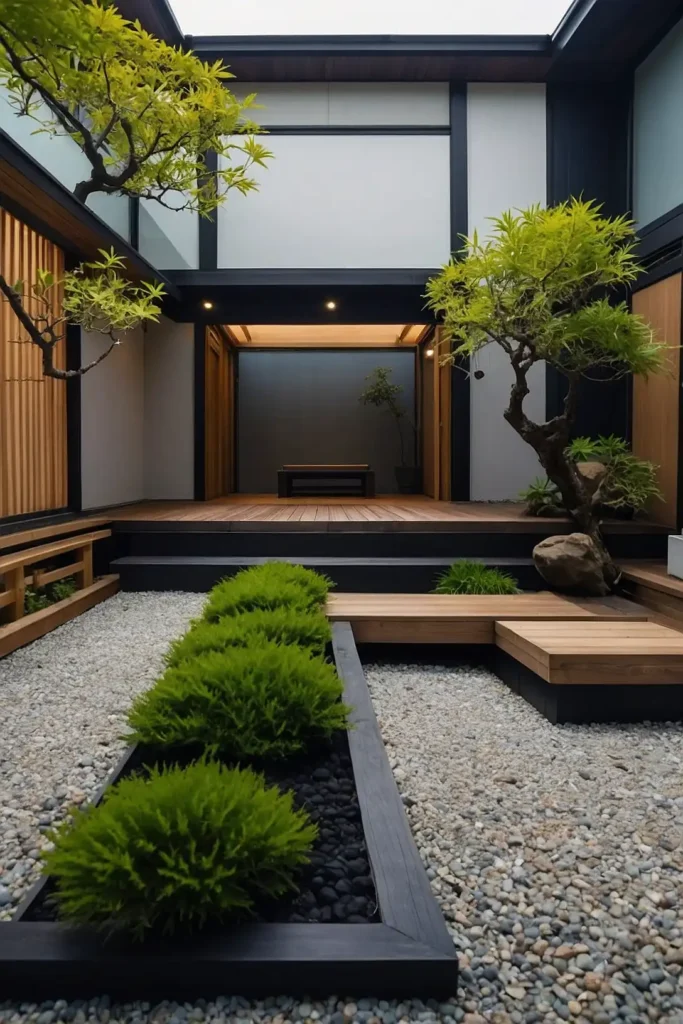
Apply Japanese garden principles to create a deliberately minimal space focused on a few perfect elements rather than trying to fit too many plants or features in a small area.
You’ll discover how careful restraint actually makes your garden feel larger and more peaceful.
Focus on perfect specimen plants, negative space, and simple materials for a garden that feels expansive despite its size.
Conclusion
Your small garden can become an extraordinary outdoor space with creative thinking and smart design.
Start with ideas that match your lifestyle, implement them thoughtfully, and watch your tiny garden transform into your favorite spot at home.

